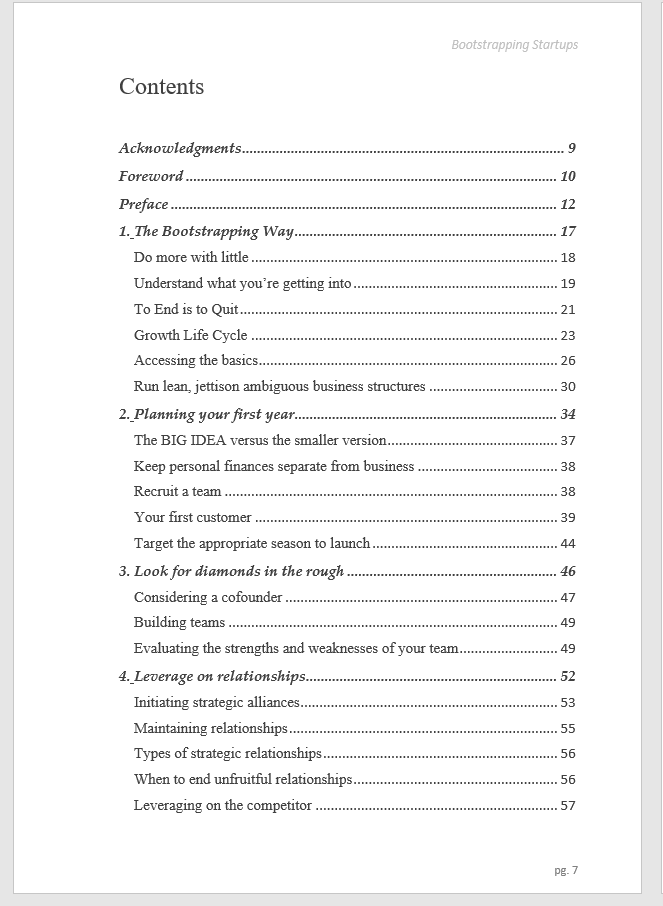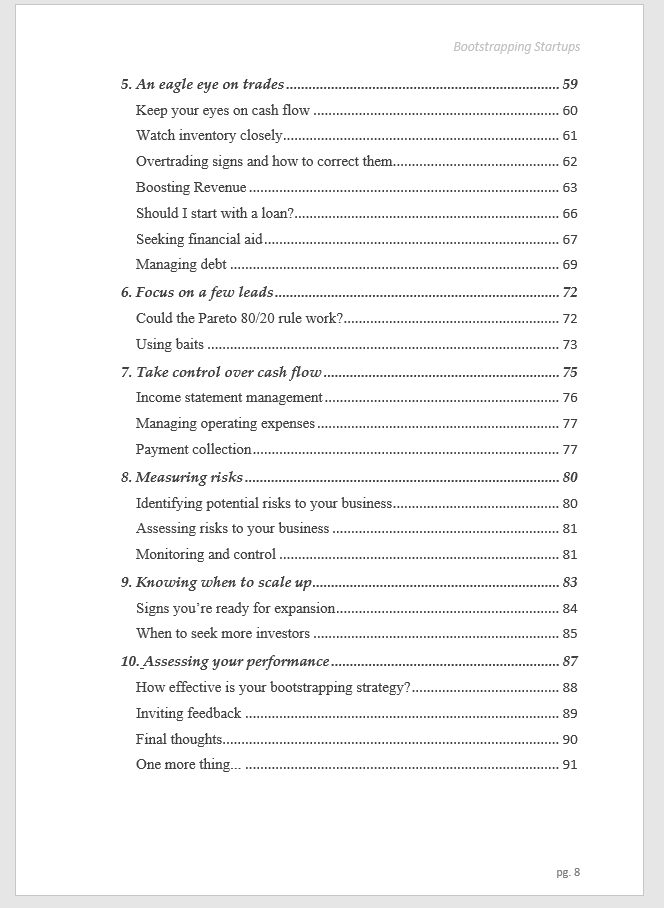5 Overtrading Signals Small Businesses Must See and How to Correct them
advertisement - scroll to continue
This is an extract from my book: Bootstrapping Startups — Do more with little.
On This Page
An Eagle eye on trades
Ever wondered why smart drivers peep into their dashboards intermittently while driving?
advertisement - scroll to continue
The overall mechanics and electricals of a car are reported on a central display unit known as the dashboard, right in front of the driver.
Newer vehicles with advanced electronic systems report signals through the electronically controlled sensors to the dashboard in real-time.

Driving without looking at the gauges on your dashboard for extended periods could be pushing your luck too far even when you’ve got a new car. Your small business has similar working systems to that of a car.
For a business to run optimally and effectively, you’ll need to keep an eagle eye on all aspects of the business.
You may argue …
“My business is so elaborate and complex to see everything that goes on.”
Or
“I’ve got a vibrant and articulate team to handle the technical areas, I’ll oversee and handle strategic issues”.
Some bigger corporations slide into complacency when everything runs on autopilot ignoring red flags until catastrophe strikes. How a business will make money and retain it should keep every entrepreneur on their toes.
The funds invested, time, emotions and all the hard work is certainly not a joke, and a reward for all risks taken should be tangible and fulfilling. Keeping an eye on what goes on in your business daily is critical.
advertisement - scroll to continue
Some business owners hire a salesperson and an accountant and chill, thinking that is enough. Getting experts on board is the right thing to do but it won’t be enough if you want to have your figures at the tip of your fingers. No one needs to know your business better than you.
In the early years, your transactions won’t be so overwhelming that you won’t know your customers and your overall trading position. To control operational leakages, you need to have an eagle eye on your business.
Your business dashboard can be customized to suit your operations with easy-to-use tools like an excel spreadsheet or some free or paid software to track all areas of your business. Some of these software can handle cash flow, tax, risk management, human resources, budgeting, security, etc.
If you cannot afford expensive software, you can recreate some of these features with tables in excel to highlight some of these customizable events –
1. Daily Trading Activity – Products sold.
2. Daily Operating expenses – Expenses incurred during production.
3. Daily payment collection position – How much comes in as income realized.
4. Performance Indicator – An alert that reveals the position of the business…either healthy, weak or on the verge of collapse.
It’s important to consider key areas of your business and keep your eyes on them.
advertisement - scroll to continue
Keep your eyes on cash flow
This simply means checking and balancing money that goes out in form of finished goods and money that comes in as payments for goods sold. This also extends to daily operational expenses and other forms of income that come in.

For example, interests from savings and fixed deposit accounts, treasury bill investments, dividends from shares, and other types of income depending on your investments.
Periodically, you should review expenses incurred against vouchers, and request to be ‘copied’ on bank account debits and credit SMS alerts if you’ve
not done so. The scenarios are endless, ask questions on accounting entries and other items as the case may be.
If malpractices are uncovered, be sure to deal with them. In all, ensure you supervise the finances of your small business while you give your team the freedom to be themselves.
Watch inventory closely
This is where capital is converted to physical goods or services. An honest mistake by you or any member of your team could be tolerated if it happens once in a while. But repeated wastage or connivance with other team members can result in operational losses and therefore should not be tolerated.
Ensure your products in the office space or warehouse are routinely checked by an inventory officer and crosschecked by you. If you’re a service-oriented business and as such render professional services, you may not worry about this so much.
Stationery, computers, and other office equipment are still part of your assets. If you’ve not numerically tagged them, you can get someone to do that and then document them to review periodically.
advertisement - scroll to continue
In an article written by Anne Fisher, Fortune.com in 2015 on employee theft, she emphasized that globally, dishonest employees are responsible for 28% of inventory losses while shoplifters account for a markedly higher 35%.
The study says that employee theft accounts for 43% of lost revenue. That’s about $18 billion or $2.3 billion more than the cost of five-finger discounts taken by customers. As a small business that is bootstrapping, it’s important to keep your eyes on this.
Overtrading signs and how to correct them
Small businesses are eager to grow quickly, the urge to recoup their investments sets in motion the drive to trade aggressively. There is a temptation to sell heavily thereby exceeding thresholds that plunge small businesses into financial heartache.
In the stock market, for instance, experienced traders know the bull and bear trading seasons. All they need to do is to take positions to maximize their capital by learning to be patient and wait.
Symptoms similar to this could indicate many problems and overtrading could be one of them:
a) Inventory exceeding cash available for continuous operations
When a large part of your funds is used to manufacture or restock continuously without realizing cash on time, the business may not be able to finance its other commitments.
Aggressive investment in inventory to increase market share is one of the basic causes of cash crunch. Low liquidity stifles cash for day-to-day operations exposing the small business to financial struggles for the period.
b) Weak financial capacity to restock
When it’s time to reorder or restock and you realize that cash is not as available as you thought. One problem could be when payments exceed the due date and there are no capital reserves to cover the gaps.
Overtrading chokes a business and it could be detrimental to the financial resources required to restock for the next trading period.
c) Stale inventory
Restocking at the wrong time or overstocking all the time can put your sales team on their toes to sell even at low margins. Unsold stock will eventually expire because the timing wasn’t right. Businesses have peak seasons for sales and as such some months will have low sales.
d) Persistent request for bridge financing to support daily obligations
Cash is king, and low liquidity puts small business owners in a difficult situation, if you constantly borrow to pay salaries and fund other expenses, then you could be overtrading.
e) High income and low profit
When high sales turnover has no corresponding increase in profit, it’s like running on the treadmill with much effort and little returns. At the end of the month, profit margins continue to decline.
To correct overtrading problems, you may have to study to correct your production/distribution pattern verse your payment collection and inventory.
Understand how Economic order quantity works, and draw up a reorder level register to know when to restock, this will help minimize reorder costs to your business.
Set maximum trading limits for each day, week, and month and stick to it. If you must raise the bar, and make corresponding preparations to accommodate
any impact will have on your business. Restructure your payment collection process to improve your cash flow position.
Boosting Revenue
1 bestselling author Josh Kaufman in his book – The Personal MBA (Master the art of business) highlighted the four methods to increase revenue.
a) Increase the number of customers.
b) Increase average transaction size.
c) Increase the frequency of transactions per customer.
d) Raise your prices.
============================================
Oops!
The extract ends at this point, but you can get the complete book on Gumroad for $19.
If you’re set to launch a business but have limited financial resources, then this book is for you.
The book, Bootstrapping Startups shares my experiences as a budding entrepreneur… my experiences were a mix of a few constructive steps and some naive ones. All these experiences made me better today and you can learn from them without having to repeat the same mistakes.
I have recorded decent successes today, and I’ll attribute them to the lessons I’ve learned along the way. Starting a business with limited financial resources is hard! This is where bootstrapping comes into play.
Bootstrapping a small business can be learned…YES, it can!
In this book you will learn how I did it, my successes, the mistakes I made so you should avoid, and how Fortune 500 companies we admire today bootstrapped their businesses till they became successful.
You’ll get insight into how you can run a smaller version of your BIG IDEA instead of halting because of cash. I will show you how to set up a small team, choose a cofounder if you want and how to deploy available cash at the starting phase.
Trust me, this is one guide you’ll ever need.









